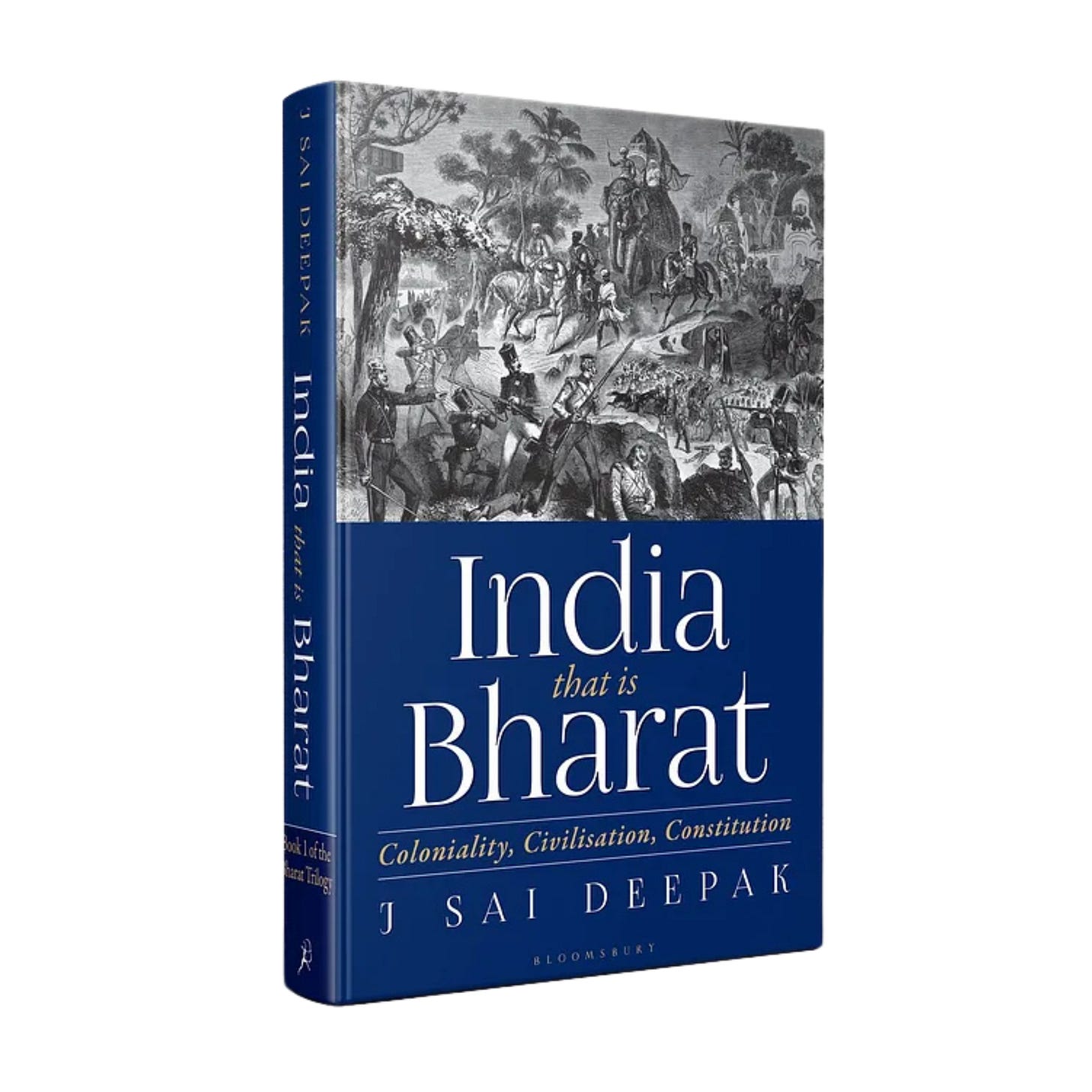#17 The Grand Confluence: Mahakumbh Mela 2025
Welcome to the seventeenth edition of Policy Mandala. We have structured this edition on a 1-1 structure, 1 detailed analysis and 1 book recommendation. Enjoy Reading.
Analysis Mandala: Deepening Policy Understanding
Below, we discuss one recent policy update from the past week(s), and analyze them for you: Let’s go!
Over the next 46 days, nearly a quarter of India’s population will travel from an area of 32 lakh sq. km to just 40 sq. km. Welcome to the Mahakumbh: the world’s largest human gathering.
With 45 crore people expected to visit, almost every 20th human is going to visit it in the next 6 weeks. So, whether you’re planning to join this extraordinary gathering or simply marveling from afar, we know you are curious.
And in this Policy Mandala, we’re here to satisfy that curiosity.
But what can we offer that hasn’t already been covered by 24/7 media channels, countless Twitter threads, or the millions of reels flooding your phones?
We’re skipping the basics—the festival’s historical significance, the uniqueness of its rituals, logistical guides, or tales of the Sadhus. For those, you can go here, here, and here.
Instead, in this Policy Mandala, we’re focusing on the governance of Kumbh:
What does it take to organize an event of this magnitude? How long does the planning process take? What logistical challenges must be addressed?
Should the government even play a role in an event of this nature? What are the risks and rewards for the state? How does the government plan to prevent mishaps in such a massive gathering?
What does such a gathering mean for the environment? And as the largest gathering in history, how is it perceived internationally?
If these questions intrigue you as much as they do us, let’s dive in!
Q: What does it take to organize Mahakumbh?
A: Financially, the organization of Kumbh took on a budget of approx. ₹7500 crore from the state government (that’s a 72% increase from the 2019 Kumbh budget) with around ₹2100 crores added to it from the central funds.
For Mahakumbh 2025 the Uttar Pradesh government allocated a total of ₹5,621 crore in the budgets of last 3 years. Additionally, departmental budgets from key sectors like PWD, tourism, and urban planning are funding 125 projects worth ₹1,636 crore.
But such a large-scale project isn’t just a financial equation. It’s a massive administrative exercise.
To make the administration of Mahakumbh smooth and efficient, the entire mela area has been declared a temporary district called Mahakumbh Nagar (that’s the power of a federal system at play - states are free to create new districts or even abolish existing ones).
With 400 kms of temporary roads, 30 pontoon bridges and additional buses and trains deployed, Mahakumbh Nagar is leaving no stone unturned to ensure a seamless experience for the millions of devotees.
So who’s running the show?
The Mahakumbh 2025 is being managed entirely by Prayagraj Mela Authority, a body created specifically to manage melas in 2017.
At its helm is the Commissioner of Allahabad Division as Chairperson, supported by the Inspector General of Police and the District Magistrate as Vice-Chairpersons. But the real superhero of this massive operation is Vijay Kiran Anand, a 2009-batch IAS officer and this year’s Mela Adhikari. Known for his exceptional work as Mission Director of Swachh Bharat in Uttar Pradesh, he is ensuring that every element of this grand event runs like clockwork.
But isn’t all this a routine affair? After all, the kumbh has been around for centuries. Not quite.
The 2025 Mahakumbh is not only different in scale this year, but is also massively digitally driven. It is embracing innovation in many ways, making it unique in its own right:
GIS-Based Maps: Visitors can use Google Maps for navigation, locating food stalls, emergency services, and more.
Online Booking: Accommodation can be booked through platforms like IRCTC and its partners MakeMyTrip, and GoIBIBO.
Drone Displays: 2,000 drones narrate mythological tales such as the Samudra Manthan.
Immersive Virtual Reality: And for those who like to see the big picture—360-degree VR experiences bring major events like the Ganga Aarti and Peshwai procession to life.
But should a state which is among the top 5 poor states (as per NFHS-5 (2019-21), 22.93% of UP population are in multidimensional poverty) in the country spend so much?
It’s not merely spending; it’s an investment. The Kumbh is an economic powerhouse. With ₹2–3 lakh crore of economic activity anticipated, the state government expects ₹25,000 crore in revenue from taxes and services alone. That’s over three times the amount spent on organizing the Mahakumbh! The 1.5 lakh tents set up by the UP government are pulling their weight too. The luxury tent accommodations have tents priced at ₹18,000–₹20,000 a night (and ultra-premium stays touching ₹1 lakh per night), all of which are booked out.
A basic guesstimate tells us that the government is going to earn approx. 414 crores from these accommodations alone.
Besides, over 45,000 families are directly employed, with thousands of additional jobs in transportation, hospitality, and retail sectors.
From the Mughals to the British who saw the Kumbh's economic allure, to the current government aiming to extract maximum economic benefits, the economic potential of kumbh doesn’t seem to be lost on any one.
So, should you plan a visit?
Well, let’s address some classic concerns. Historically, the Kumbh has carried the notorious image of people getting lost in its vast crowds—a trope Bollywood has happily dramatized (think Andaz Apna Apna, Dharmatma, or Amar Akbar Anthony). But this year, the mela authority is determined to rewrite that narrative.
Advanced safety, security and accessibility features have been put in place at the Mahakumbh. The Lost-and-found services now utilize AI for real-time tracking, ensuring no one becomes the next “lost at Kumbh” story. Water safety will be taken care of by AI-powered cameras and underwater drones with remote-controlled life buoys for surveillance. A cybersecurity helpline (1903) along with 56 cyber experts are also in place to protect the devotees from digital fraud.
If you are planning to attend anyway, there are added perks. For instance, Netra Kumbh is offering 500,000 free eye check-ups, 300,000 spectacles, and referrals for cataract surgery. Meanwhile BHISHM Cubes, your mobile medical units are ready to handle 200 emergencies and respond within 12 minutes.
Along with all this, the Mahakumbh is also upping the ante with its eco-friendly initiatives. Single-use plastics are banned in favor of biodegradable materials like leaf plates and clay cups, 3 lakh native saplings have been planted around the Mela grounds and e-rickshaws, electric autos, and Pink Taxis driven by women are being heavily encouraged.
Q: If this is the world’s biggest gathering in humanity’s history, what is the international response around Kumbh?
The Mahakumbh is garnering extensive international media coverage, but that’s just the beginning. Strategic efforts are being made to globalize Kumbh and connect with audiences worldwide:
Thematic Pavilions at international events like FITUR in Madrid and ITB Berlin, showcasing UP’s spiritual heritage.
VVIP Lounges for B2B and B2C sessions to foster partnerships and investments.
Multilingual Outreach with promotional materials in English and European languages.
The Incredible India Pavilion, a 5,000 sq. ft. cultural hub at the Mela, featuring the “Dekho Apna Desh” poll and a multilingual tourist helpline.
As per the Ministry of Culture and Tourism, more than 15 lakh foreign tourists are expected to visit the Mahakumbh this year.
Faith, Culture and Modernity
There’s no denying that Mahakumbh 2025 is a remarkable experiment in blending tradition with technology. By going global, embracing inclusivity, and aiming for sustainability, Uttar Pradesh has set a bold new standard for cultural festivals.
But as we marvel at this grand spectacle, let’s not shy away from the questions it raises.
Managing waste generated by millions while maintaining eco-friendly zones is ambitious, but its ultimate success will be determined by how these guidelines are enforced. What happens after the last tent is folded and the last visitor leaves?
Can political priorities align with long-term goals? Can we lead the way balancing faith with environmental responsibility or will it become another fleeting example of good intentions?
The Mahakumbh 2025 invites the world to witness the harmony of ancient traditions and modern innovations. But like every great story, it leaves us pondering: What’s next?
What do you think?
Book Mandala
In this section, we suggest a book to be read/listened to each week, for the inner policy enthusiast in you :)
Book: India that is Bharat: Coloniality, Civilisation, Constitution
Author: J. Sai Deepak
About the Book:
India, That Is Bharat: Coloniality, Civilisation, Constitution by J. Sai Deepak examines the lasting influence of colonialism on India's cultural, legal, and governance systems. It delves into the tension between Bharat’s indigenous civilizational ethos and the Western frameworks imposed during and after colonial rule. Through a detailed analysis of history, philosophy, and the making of the Indian Constitution, the book argues for the intellectual and cultural decolonization of India. It calls for rediscovering India's civilizational identity while critiquing the persistence of colonial ideologies in modern Indian institutions.
Our Take:
India, That Is Bharat is a thought-provoking and meticulously researched work that challenges readers to rethink India's identity through the lens of its civilizational ethos and colonial legacy. The book offers a compelling critique of how colonial frameworks continue to influence India's governance and culture, even after independence, while making a strong case for intellectual and cultural decolonization. Deepak’s analysis of the Indian Constitution and its alignment with Bharat’s indigenous traditions is particularly insightful, though some dense sections may require extra effort to navigate. Overall, it’s a good read for anyone seeking to understand the deeper layers of India’s socio-political evolution.
Hope you liked today’s Policy Mandala!
We believe nation-building needs a community of changemakers—so we’re creating Bharat Mandala, an ecosystem for impact. Be part of our journey here!
Thanks for reading Policy Mandala! Subscribe for free to receive new posts and support our work.





Amazing analysis!